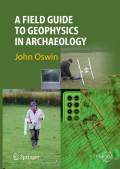
Geophysics operations in archaeology have become well known through exposure on television. However, the technique is presented as the action of specialists and something of a mystery, where people walk about with strange contraptions, and results appear from a computer. This is not the case, however. Some scientific knowledge is needed in order to understand how the machines work and what they detect but otherwise it is only necessary to know how to handle the instruments, how to survey a field and how to interpret the computer results. This book provides all the relevant information. It explains geophysics operations in archaeology, describes the science that gives the soil properties to measure and the means by which the instruments make their measurements. Dr John Oswin is in charge of the geophysics operation of the Bath and Camerton Archaeological Society and his work has recently been the subject of a television programme. He has taught many students how to use geophysical equipment. The available books are very technical and written by scientists for scientists, whereas most archaeology students have a background in the Humanities, and find that approach daunting Aims to explain the science as simply as possible Guide students through the process of a survey, so that they gain the confidence to do their own surveys INDICE: 1 Introduction. 1.1 Geophysics in Archaeology. 1.2 Geophysics and geology.1.3 What the pictures tell. 1.4 What this book aims to do.- 2 The basic science. 2.1 Electricity. 2.2 Magnetism. 2.3 Electromagnetic waves.- 3 The instruments. 3.1 Resistance meters. 3.2 Magnetometers. 3.3 Electromagnetic devices. 3.4 Ground radar. 3.5 Electronic distance measurement and GPS.- 4 Understanding the results. 4.1 Download software.4.2 Pattern recognition. 4.3 Interpretation.- 5 Setting up a survey. 5.1 Finding a site. 5.2 Logistics. 5.3 Layingout a grid. 5.4 Making the measurements. 5.5 Showing the results.- 6 Examples. 6.1 Looking at landscapes. 6.2 Roman villas. 6.3 Sorting out periods.- Glossary. Bibliographical note.- Appendix A. Some real equipment controls. AppendixB. A kit list for a survey.
- ISBN: 978-3-540-76691-9
- Editorial: Springer
- Encuadernacion: Cartoné
- Páginas: 210
- Fecha Publicación: 01/06/2009
- Nº Volúmenes: 1
- Idioma: Inglés
